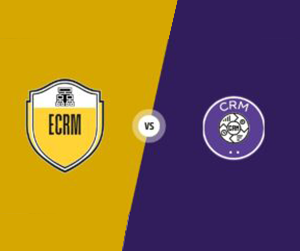Oscar Gomes coined the term eCRM, short for electronic customer relationship management. It does everything CRM does but uses the internet, including intranet, extranet, and internet. eCRM is about using technology to manage customer relationships.
In eCRM, you gather, organise, and engage with customer data. It’s more effective at communicating with customers within the organisation compared to traditional CRM.
Shifting from RM to CRM:
In 1983, Marketing professor Leonard Berry introduced relationship marketing (RM), focusing on building and enhancing customer relationships within organisations.
Over time, companies began engaging in meaningful conversations with individual customers, leading to the emergence of new organisational structures and technologies. This evolution eventually led to the development of customer relationship management (CRM) as we know it today.
The main difference between CRM and e-CRM lies in their technology approach. CRM doesn’t explicitly incorporate technology, whereas e-CRM utilises information technology (IT) to implement relationship marketing strategies.
Understanding What CRM Is All About
The definition of CRM is still widely discussed, but in simple terms, it’s about effectively managing relationships with all customers and communicating with them individually.
Companies recognise that customers vary in their actions, preferences, and responses to marketing. By acknowledging these differences, businesses can increase their profits.
Having loyal customers is beneficial for companies. They not only bring in consistent revenue but also spread the word about the company. To retain existing customers and attract new ones, companies use CRM.
There are two main types: B2B (business-to-business) and B2C (business-to-customer or business-to-consumer). Since the needs and behaviors differ in B2B and B2C, it’s important to view CRM from each perspective.
Separating CRM from eCRM:
Here are the key variations between CRM and eCRM:
Customer Contacts:
- CRM: Contacts made through retail stores, phone, and fax.
- eCRM: Utilises traditional methods plus Internet, email, wireless, and PDA technologies.
System Interface:
- CRM: Emphasises back-end, implements ERP systems.
- eCRM: Focuses more on the front end, interacts with the back-end using ERP systems, data warehouses, and data marts.
System Overhead (Client Computers):
- CRM: Clients need to download applications and may require rewriting for different platforms.
- eCRM: No download requirements, as clients use the browser.
Customisation and Personalisation of Information:
- CRM: Views differ based on the audience, limited personalised views without program changes.
- eCRM: Offers personalised individual views based on purchase history and preferences, with user customisation.
System Focus:
- CRM: Created for internal use, designed based on job function and products, with web applications for a single department or business unit.
- eCRM: Created for external use, designed based on customer needs, with web applications designed for enterprise-wide use.
System Maintenance and Modification:
- CRM: More time-consuming implementation and maintenance, higher cost due to the system existing at different locations and on various servers.
- eCRM: Reduction in time and cost, implementation and maintenance can occur at one location and on one server.
Understanding Electronic Customer Relationship Management (eCRM):
As businesses increasingly rely on the internet, they see an opportunity to reduce customer-service costs, strengthen customer relationships, and personalise marketing messages through mass customisation.
Electronic Customer Relationship Management (eCRM) comes into play in this scenario. Companies adopt eCRM to enhance customer satisfaction and, in turn, boost customer loyalty and retention.
E-loyalty, referring to customer loyalty online, brings long-term profits to online retailers. This is because they spend less on acquiring new customers and see an increase in retaining existing ones.
The Internet’s rise, along with the development of sales force automation (SFA) using electronic methods to gather and analyse customer information, laid the foundation for eCRM.
The eCRM process involves a three-step life cycle:
Data Collection: Actively gathering information about customer preferences through responses and passively tracking online activity via websites, emails, and questionnaires.
Data Aggregation: Filtering and analysing collected data to meet the specific needs of the company and its customers.
Customer Interaction: Providing appropriate feedback to customers based on their needs.
eCRM is defined as activities aimed at managing customer relationships using the internet, web browsers, or other electronic touchpoints.
The challenge lies in delivering communication and information on the right topic, in the right amount, and at the right time that fits the customer’s specific needs.
eCRM Strategy Components:
Operational Component:
- Objective: Prioritise customer needs and seamlessly implement processes by sharing information.
- Benefits: Avoid unnecessary inconvenience to customers and eliminate redundant processes.
- Implementation: Integrate customer-centric information into the operational processes of the business.
Analytical Component:
- Objective: Utilise analysis to establish and maintain long-term relationships with customers.
- Benefits: Enhance the ability to understand customer behavior, preferences, and trends, aiding in building sustained connections.
- Implementation: Implement analytical tools and methods to interpret customer data, enabling informed decision-making for improved customer relationships.
Collaborative Component:
- Objective: Enhance efficiency through improved communication technology, facilitating collaboration within different departments (intraorganisational) or with business partners (interorganisational).
- Benefits: Streamline internal processes and external partnerships by sharing relevant information.
- Implementation: Utilise advanced communication technologies to enable seamless collaboration and information sharing among various organisational units or external partners.
eCRM strategies encompass operational efficiency, analytical insights, and collaborative efforts, all geared towards providing enhanced customer experiences and fostering long-term relationships.
Implementing and Integrating CRM Solutions:
Non-Electronic Solution:
Companies have the option of using CRM software packages or designing their own solutions for deploying CRM activities without relying on electronic systems. To implement CRM effectively, consider the following factors:
1. Create a Customer-Focused Culture: Foster a culture within the organisation that prioritises customer needs.
2. Adopt Customer-Based Managers: Appoint managers who focus on customer satisfaction as a key metric.
3. Develop End-to-End Processes: Design processes that cater to customers throughout their entire journey.
4. Recommend Problem-Solving Questions: Provide questions that assist customers in resolving issues effectively.
5.Track All Aspects of Selling: Monitor and track sales activities for both existing customers and prospects.
Additionally, integrating CRM solutions into other information systems used by the company enhances effectiveness. For example, connecting CRM with transaction processing systems (TPS) allows real-time data processing, preventing issues like misleading customers about product availability.
Cloud Solution:
In contemporary business, many enterprise CRM systems are moving to cloud computing solutions, rising from 8 percent of the CRM market in 2005 to 20 percent in 2008 (Gartner).
Advantages of cloud-based CRM include cost efficiency, pay-per-use models, and streamlined customer connections. Cloud CRM enables immediate recording of transactions in the CRM database.
Key considerations for selecting a cloud CRM system:
Assess Company Needs: Identify specific features relevant to your company’s requirements.
Take Advantage of Free Trials: Explore free trials to compare and become familiar with different options.
Do the Math: Estimate the budget required for implementing the CRM system based on customer strategy.
Consider Mobile Options: Some systems, like Salesforce.com, can integrate with various mobile applications.
Ask About Security: Ensure the chosen cloud CRM solution provides sufficient security.
Ensure Sales Team Buy-In: Gain support from the sales team, as they are on the frontline of enterprise interactions.
Know Your Exit Strategy: Understand the exit mechanism to maintain flexibility in case of future changes.
Whether through non-electronic or cloud solutions, effective CRM implementation involves aligning processes with customer needs and choosing solutions that integrate seamlessly into existing operations.
Identifying eCRM Levels:
In delineating the scope of eCRM, three distinct levels can be identified:
1. Foundational Services:
Encompasses essential services like ensuring effective and responsive website functionality, along with efficient order fulfillment.
2. Customer-Centered Services:
Involves services focused on the customer, such as order tracking, product configuration, customisation, and measures to enhance security and trust.
3. Value-Added Services:
Incorporates additional services beyond the basics, including online auctions, as well as online training and education opportunities.
Growing Importance of Self-Services:
Self-services are gaining prominence in CRM activities, facilitated by the rise of the Internet and eCRM. Integration of these self-service activities into traditional channels is crucial for success. For instance, Ford’s attempt to sell cars directly to customers on its website faced resistance from its dealer network.
Types of CRM Activities:
CRM activities can be categorised into two main types:
-Reactive Service:
Initiated when a customer encounters a problem and reaches out to the company.
-Proactive Service:
Involves the company taking the initiative to contact the customer, establishing dialogue, and proactively resolving issues.
Steps to eCRM Success:
Several factors contribute to the success of implementing eCRM at any level. Four key steps are suggested for a successful implementation:
1.Developing Customer-Centric Strategies:
Creating strategies that prioritise and revolve around the needs and preferences of the customer.
2.Redesigning Workflow Management Systems:
Overhauling systems to ensure efficient and customer-focused workflow management.
3.Re-Engineering Work Processes:
Adjusting and improving work processes to align with the goals of enhanced customer relationship management.
4.Supporting with the Right Technologies:
Employing the appropriate technologies to support and enhance the effectiveness of the eCRM system.
These steps collectively contribute to the viability and success of eCRM projects, emphasising the importance of customer-centric approaches, streamlined workflows, process optimisation, & technology integration.
Challenges and Failures in CRM Implementations:
Designing, creating, and implementing IT projects, especially in Customer Relationship Management (CRM), carry inherent risks. While there is a positive trend showing a decrease in CRM failures from around 80% in 1998 to about 40% in 2003, challenges persist. Several major issues contribute to CRM failures:
1. Difficulty in Measuring Intangible Benefits:
Evaluating and assigning value to intangible benefits poses a challenge, making it difficult to quantify the success of CRM initiatives.
2. Failure to Identify Specific Business Problems:
Lack of clarity in identifying and focusing on specific business problems can lead to misaligned CRM strategies and objectives.
3. Lack of Active Senior Management Sponsorship:
Successful CRM implementation requires active sponsorship and support from senior management. Lack of involvement at this level can hinder the alignment of CRM goals with overall business objectives.
4. Poor User Acceptance:
Users are central to the success of CRM systems. Poor user acceptance, often due to issues like inadequate training or system complexity, can lead to implementation failures.
5. Automating Poorly Defined Processes:
Attempting to automate processes that are poorly defined or lack clarity can result in inefficiencies and hinder the effectiveness of CRM initiatives.
CRM Failure Rates (2001-2009):
- 2001: 50% failure rate (Gartner Group)
- 2002: 70% failure rate (Butler Group)
- 2003: 69.3% failure rate (Selling Power, CSO Forum)
- 2004: 18% failure rate (AMR Research Group)
- 2005: 31% failure rate (AMR Research)
- 2006: 29% failure rate (AMR Research)
- 2007: 56% failure rate (Economist Intelligence Unit)
- 2009: 47% failure rate (Forrester Research)
Comparing CRM Failure Rates:
The varying rates between 2001 and 2009 highlight differing measurement criteria and research methodologies among groups. These rates often rely on customer responses regarding the success of CRM implementations.
While the failure rates in CRM have shown improvement, ongoing challenges persist. Addressing issues such as clear process definition, strong senior management sponsorship, and effective user training can contribute to more successful CRM implementations.
Privacy in CRM Activities: Safeguarding Customer Information
The successful implementation of Customer Relationship Management (CRM) activities requires careful consideration of safety and privacy concerns.
CRM systems rely on databases storing various customer data, adhering to the principle that more data leads to better service for individual customers.
However, this practice raises privacy issues, exemplified by online credit card transactions and the use of ‘cookies’ on the Internet to track user information and behavior.
Website Design and Trust:
The design and quality of a website significantly influence the level of trust customers feel and their willingness to engage in transactions or provide personal information. Elements such as clear navigation, secure transactions, and transparent information practices contribute to building customer trust.
Privacy Policy Effectiveness:
Privacy policies may fall short in communicating to customers the extent to which their information is utilised. A study revealed that many respondents had incorrect perceptions about how their information is used, assuming that having a privacy policy means their data won’t be shared without explicit consent. Marketers must clearly articulate the intended use of customer information and highlight the benefits to gain informed consent for advertising purposes.
Addressing Privacy Concerns:
- Legislation: Proposals for legislation regulating the use of personal data aim to enhance privacy protection.
- Education: Efforts are being made to educate consumers about privacy policies and the proper use of their information.
- Performance Measures: Internet policy officials advocate for more rigorous performance measures of privacy policies to ensure adherence and transparency.
Statistics on Privacy:
- 38% of retailers don’t discuss privacy in their sign-up or welcome emails.
- Approximately 50% of major online retailers address privacy concerns during the email subscription process.
As the use of the Internet, electronic CRM solutions, and e-business continues to rise, efforts are ongoing to enhance system development and safety measures.
Striking a balance between utilising customer data for improved services and respecting privacy is crucial for the sustained success of CRM activities.
Conclusion
Customer Relationship Management (CRM) is a versatile approach that incorporates diverse strategies, technologies, and practices to oversee and analyse customer interactions across the entire customer lifecycle. It spans a broad spectrum of activities, from foundational services to value-added services, all geared toward cultivating and sustaining robust relationships with customers.
The evolution of CRM has given rise to electronic CRM (eCRM), mobile CRM (mCRM), and other subsets, reflecting the dynamic nature of customer interactions in the digital age. eCRM utilises electronic channels to enhance customer relationships, while mCRM extends these capabilities to mobile devices, offering flexibility and accessibility.
However, the successful implementation of CRM is not without its challenges. Failures in CRM projects have been linked to issues such as difficulty in measuring intangible benefits, poor user acceptance, and inadequate senior management sponsorship. Despite these challenges, there is a positive trend, with CRM failure rates showing improvement over the years.
Privacy is a critical concern in CRM activities, especially as they rely on extensive databases storing customer information. Effective communication of privacy policies, clear articulation of the benefits of data usage, and adherence to legislation are essential to address privacy concerns. Striking a balance between utilising customer data for improved services and respecting privacy is crucial for the sustained success of CRM initiatives.
As technology continues to advance and customer expectations evolve, the key to successful CRM lies in adapting strategies to meet changing needs, fostering a customer-centric culture, and ensuring seamless integration of CRM systems into overall business processes. Continuous efforts in education, regulation, and performance measurement will contribute to building trust and further reaping the benefits of CRM activities.





